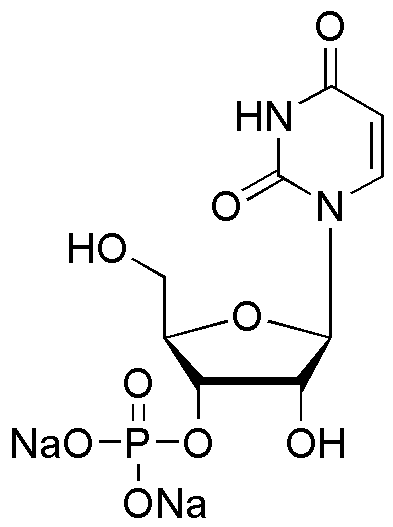Uridine-3'-monophosphate disodium salt is widely utilized in research focused on:
- Nucleotide Synthesis: This compound serves as a key building block in the synthesis of RNA and other nucleotides, making it essential for molecular biology and genetic research.
- Cell Culture: It is commonly used in cell culture media to promote cell growth and proliferation, particularly in studies involving neuronal cells and other fast-growing cell lines.
- Neuroprotective Studies: Researchers explore its potential neuroprotective effects, particularly in conditions like neurodegeneration, where it may help support neuronal health and function.
- Pharmaceutical Development: The compound is investigated for its role in developing treatments for various diseases, including metabolic disorders, due to its involvement in cellular energy metabolism.
- Biochemical Research: It is utilized in various biochemical assays to study enzyme activities and metabolic pathways, providing insights into cellular processes and disease mechanisms.
General Information
Properties
Safety and Regulations
Applications
Uridine-3'-monophosphate disodium salt is widely utilized in research focused on:
- Nucleotide Synthesis: This compound serves as a key building block in the synthesis of RNA and other nucleotides, making it essential for molecular biology and genetic research.
- Cell Culture: It is commonly used in cell culture media to promote cell growth and proliferation, particularly in studies involving neuronal cells and other fast-growing cell lines.
- Neuroprotective Studies: Researchers explore its potential neuroprotective effects, particularly in conditions like neurodegeneration, where it may help support neuronal health and function.
- Pharmaceutical Development: The compound is investigated for its role in developing treatments for various diseases, including metabolic disorders, due to its involvement in cellular energy metabolism.
- Biochemical Research: It is utilized in various biochemical assays to study enzyme activities and metabolic pathways, providing insights into cellular processes and disease mechanisms.
Documents
Safety Data Sheets (SDS)
The SDS provides comprehensive safety information on handling, storage, and disposal of the product.
Product Specification (PS)
The PS provides a comprehensive breakdown of the product’s properties, including chemical composition, physical state, purity, and storage requirements. It also details acceptable quality ranges and the product's intended applications.
Certificates of Analysis (COA)
Search for Certificates of Analysis (COA) by entering the products Lot Number. Lot and Batch Numbers can be found on a product’s label following the words ‘Lot’ or ‘Batch’.
*Catalog Number
*Lot Number
Certificates Of Origin (COO)
This COO confirms the country where the product was manufactured, and also details the materials and components used in it and whether it is derived from natural, synthetic, or other specific sources. This certificate may be required for customs, trade, and regulatory compliance.
*Catalog Number
*Lot Number
Safety Data Sheets (SDS)
The SDS provides comprehensive safety information on handling, storage, and disposal of the product.
DownloadProduct Specification (PS)
The PS provides a comprehensive breakdown of the product’s properties, including chemical composition, physical state, purity, and storage requirements. It also details acceptable quality ranges and the product's intended applications.
DownloadCertificates of Analysis (COA)
Search for Certificates of Analysis (COA) by entering the products Lot Number. Lot and Batch Numbers can be found on a product’s label following the words ‘Lot’ or ‘Batch’.
*Catalog Number
*Lot Number
Certificates Of Origin (COO)
This COO confirms the country where the product was manufactured, and also details the materials and components used in it and whether it is derived from natural, synthetic, or other specific sources. This certificate may be required for customs, trade, and regulatory compliance.


